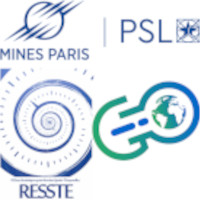Understanding bird migration is crucial to efficiently protect endangered species, either on their breeding, non-breeding or stop-over sites. Classical methods include capture-marking-recapture (ringing) or GPS tracking, but recapture rates are low and GPS devices costly and not suitable for small-size birds. Another emerging method are stable isotopes analysis in feathers. Feathers are inert tissues that incorporate the isotopic signature of the bird's environment and preserve it through time. Environments incorporate different isotopes (e.g. H, C, S, O, N, Sr) through different processes: climatic, geological, biological, and isotopic compositions in the environment vary with predictable spatial patterns, or isotopic landscapes called ‘isoscapes'. Geographic assignments of feather origins usually use a likelihood-based approach. European turtle dove populations are declining in Europe due to hunting and agricultural changes. They moult their feathers on their African wintering grounds. Thus, we use a multi-isotopic (H,O,C,S) approach with origin assignments computed from multi-gaussian likelihood to infer wintering origins and birds movements. Taking advantage of the isotopic variations within an individual, the multi-isotopic approach can be used to infer movements and temporal changes of diet or behaviour of the bird. The method can also be applied at a population scale to infer the different possible origins of the birds belonging to this population. Further efforts should focus on taking into account intra-individual variability and temporal continuity in the spatial assignment method. Furthermore, precision of the method could be improved with a better understanding of the spatial isotopic patterns and isotopic discrimination in feathers, using diverse geostatistical methods for example.
- Poster

 PDF version
PDF version

